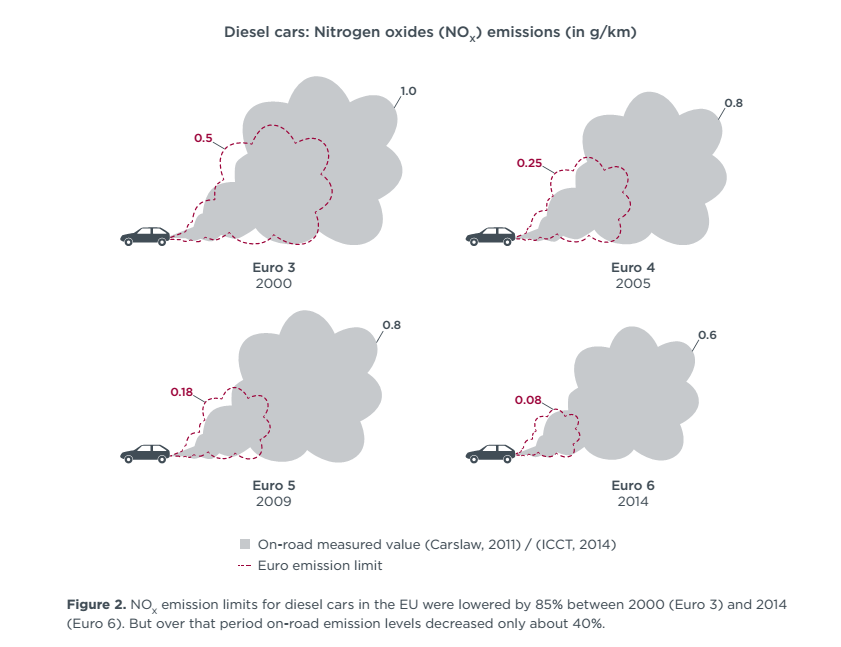A White Paper by the International Council on Clean Transportation (ICCT) has presented evidence that real world emissions of NOx from diesel cars are much higher than the Euro 6 emission limit. On average, on-road emission levels of NOx were estimated at 7 times the certified emission limit for Euro 6 vehicles. Only one of 15 cars tested achieved the Euro 6 limit, with the worst performing car emitting NOx at over 20 times above the Euro 6 emission limit of 80 mg/km.
High NOx emissions occurred across manufacturers, whatever abatement technologies were used in the vehicles, and during both demanding and normal driving conditions. The vehicles on-board NOx abatement control systems are thought to be optimized to perform well during the current type-approval test procedure for Euro 6; however, these emissions controls do not provide acceptable on-road performance.
Portable emissions measurement systems (PEMS) of the sort used in the study will be used for the type-approval of passenger cars in the EU from 2017; however, cars that do not achieve the Euro 6 emission limit in the real world will continue to be sold up to this date. This leads the authors of the report to warn that “unless sound regulatory action is taken, the gradual introduction of these vehicles into the fleets will have a disproportionate negative impact upon air quality, especially in Europe where the popularity of diesel cars remains high.”
The ongoing issue of real world vehicle emissions from diesel cars being much higher than the Euro emission limits shows that little progress has been made since 2011, when a report suggested that the disparity between historical monitoring data and the projected background NOx and NO2 concentrations published by Defra was due to the on-road emissions performance of diesel vehicles falling below that required by the Euro standards.
It is essential that the car manufacturing industry are prevented from weakening the proposed PEMS tests, and to ensure that the tests are robust and representative of real-world driving, especially given the interest in extending low emission zones as a means of improving air quality. After all, a low emissions zone that encourages the use of vehicles that are just as polluting as those that the scheme is trying to keep out will be a costly white elephant.

